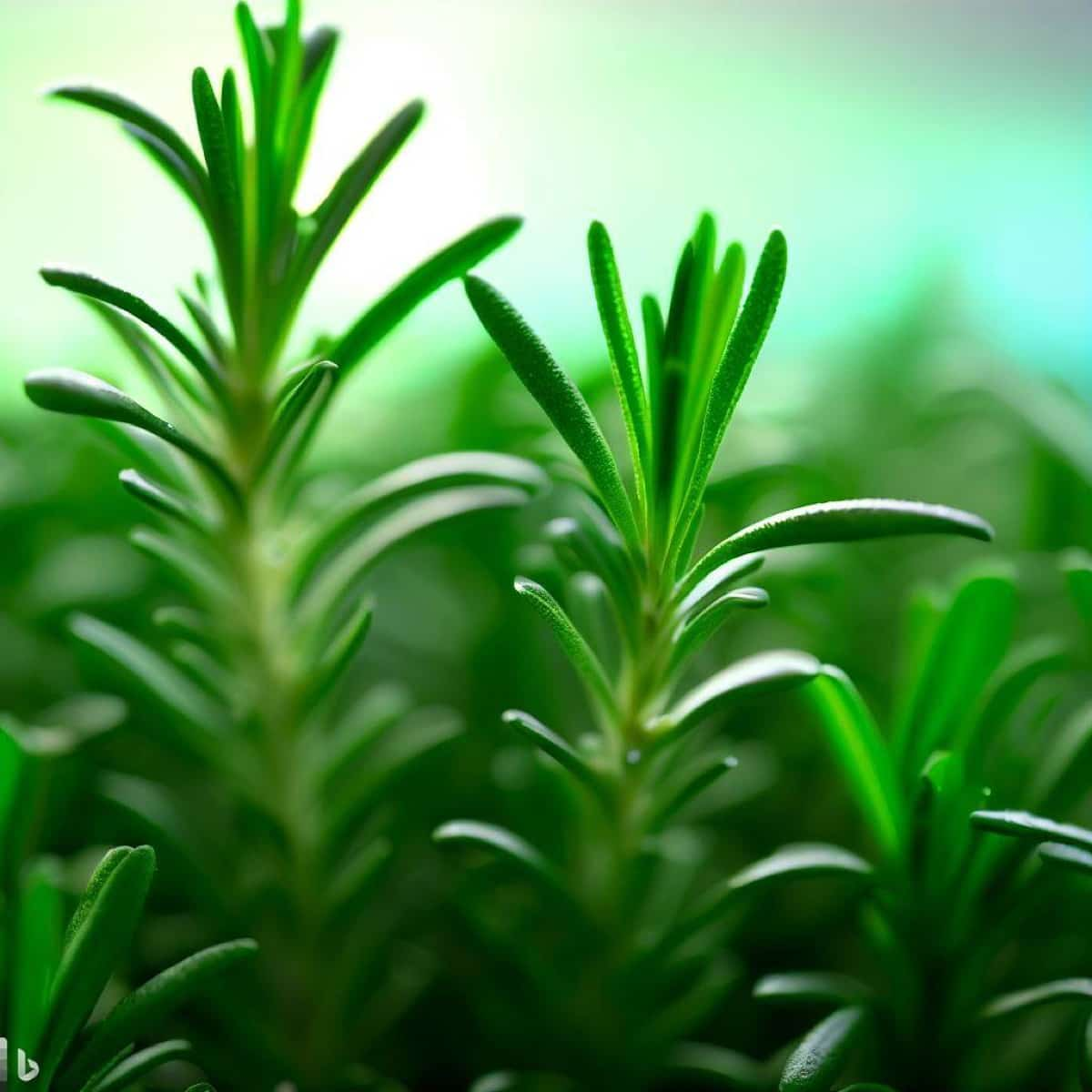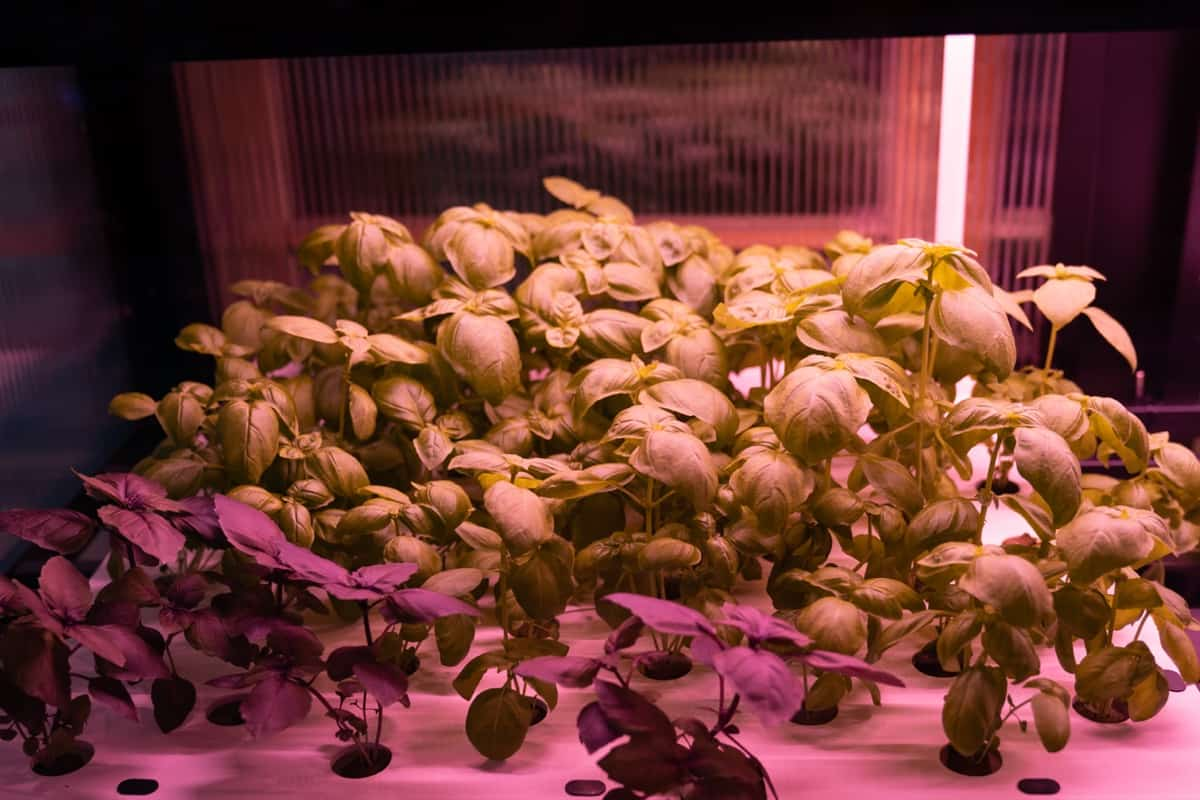For seasoned foodies and occasional cooks, herbs are essential for enhancing the flavors of many different foods. Herbs such as sage, rosemary, and basil add a wonderful aroma that may elevate a simple meal to a gourmet masterpiece. However, home cooks may find it annoying to purchase fresh herbs and occasionally find them unavailable.

Hydroponics can be very helpful in this situation as it provides a soilless way to cultivate herbs indoors or outdoors. You may be sure your favorite herbs will always be available for your culinary masterpieces with hydroponic herb growing.
Getting Started with Hydroponic Herb Gardening
- Seeds for Your Chosen Herbs: Begin with high-quality herb seeds, ensuring they are suitable for hydroponic growth.
- Containers for Growth: Select appropriate containers or grow trays to house your herbs in the hydroponic system.
- Plant Anchoring System: Invest in a reliable system to support and anchor your herb plants within the hydroponic setup.
- Light Source: Ensure your herbs receive adequate light from sunlight or artificial lighting for healthy growth.
- Nutrients: Hydroponic plants rely on nutrient solutions to thrive, so make sure you have the necessary nutrients.
- Water: Clean, oxygenated water is vital for the success of your hydroponic herb garden
Choose the Best Hydroponic Growing System
- Nutrient Film Technique (NFT)
- Deep Water Culture (DWC)
- Wick System
- Ebb and Flow System
- Drip System
- Aeroponics
- Kratky Method
Best Herbs to Grow Hydroponically
Basil
Scientific Name: Ocimum basilicum, Culinary Uses: Italian, Thai, Indonesian, Vietnamese cuisines, Method of Hydroponics: Fits all types of hydroponic systems. Basil is a widely recognized herb throughout the globe that is often used in Italian cooking, especially in recipes like pesto sauce. Basil comes in more than 60 different varieties, some of which are spicy bush basil, lemon basil, and Thai basil. Basil also has different colors and scents. Whatever variety you choose, hydroponically grown basil will brighten your space and fill it with a wonderful scent.
In case you missed it: 5 Vegetables to Grow With the Kratky Method

Parsley
Scientific Name: Petroselinum Crispum, Culinary Uses: American, Middle Eastern, European, and Brazilian cuisines, Hydroponic Method: Kratky method or nutrient film technology. This versatile herb, parsley, brings out the flavors of soups, salads, and seafood dishes. It’s a well-liked garnish as well. Hydroponically growing parsley is quite simple, which makes it a great option for novices.
Rosemary
Scientific Name: Salvia Rosmarinus, Culinary Uses: Mediterranean, French, Spanish, Italian cuisines, Hydroponic Method: Nutrient film technique. Due to its strong scent, rosemary is a common ingredient in Mediterranean cuisine. It’s a popular way to season grilled steaks in the United States. Growing hydroponically at home provides a quick pick-me-up with its energizing smell.
Sage
Scientific Name: Salvia officinalis, Culinary Uses: British, Italian, American cuisines, Hydroponic Method: Kratky method, ebb & flow, nutrient film technique. Sage has a strong, minty smell and stands out for having fuzzy leaves. In the UK, it’s frequently used for holiday stuffing and sausages. To add flavor to food, a tiny pinch of sage works wonders.
Thyme
Scientific Name: Thymus vulgaris, Culinary Uses: Mediterranean, French, Middle Eastern, and Italian cuisines, Hydroponic Method: Nutrient film technique. Its little leaves and slender stems easily identify Thyme. For example, lemon thyme has a nice, zesty scent. There is a long history of this herb being used for embalming by the ancient Egyptians. The flavor of fresh and dried Thyme is almost the same.
Dill.
Scientific Name: Anethum graveolens, Culinary Uses: Russian, Ukrainian, Scandinavian cuisines, Hydroponic Method: Nutrient film technique, Kratky method, ebb & flow. Dill is a staple in Russian cooking, yet it’s mostly used as a garnish in the United States. It enhances the taste of Greek omelets and salads. Dill grows easily hydroponically. Make sure you can use all the abundance it yields.
Oregano
Scientific Name: Origanum vulgare, Culinary Uses: Italian, Turkish, Mexican, and Greek cuisines, Hydroponic Method: Kratky method. Oregano is a member of the mint family and has a pleasantly sweet flavor. It goes well with savory foods like garlic bread. Oregano cultivated hydroponically takes around two weeks to mature and is very easy to cultivate.
Cilantro
Scientific Name: Coriandrum sativum, Culinary Uses: Mexican, Chinese, Thai, North African, Mediterranean cuisines, Hydroponic Method: Ebb & flow, nutrient film, aeroponics, drip. Some people find cilantro to be quite flavorful, while others find it to be soapy. It’s a multipurpose herb that grows worldwide; its leaves and seeds are edible. An abundant supply of this tasty herb—often used as a last-minute meal addition—is produced hydroponically.
Mint
Scientific Name: Mentha, Culinary Uses: Middle Eastern, Asian, and Greek cuisines, Hydroponic Method: Drip, Kratky method, ebb & flow. In the US, mint is well-known for its flavor and is frequently found in chocolate, candies, gum, and pastries. But it’s a common element in savory cuisines across many cultures. There are many kinds of mint, such as peppermint and lemon mint. Because of its thin root system, mint grows well in hydroponic systems.
In case you missed it: Mint Companion Plants: Plants Grow Best with Mint and Bad Companion Plants for Mint

Chives
Scientific Name: Allium schoenoprasum, Culinary Uses: Greek, Chinese, and American cuisines, Hydroponic Method: Ebb & flow, drip. Known as the “universal herb,” chives have been used in Chinese cooking for millennia and are immensely popular worldwide. Notably, chives are said to have aphrodisiac properties in Siberia; however, most people use them to subtly enhance the flavor of egg dishes, seafood, and other savory foods.
An interesting folktale claims you can ward off evil spirits in your home by hanging a bundle of chives. In the US, carefully cutting chives for baked potatoes is one of their most popular uses. Some even produce chèvre butter, a delicious spread for warm, just-baked bread.
Hydroponic Systems offer Numerous Advantages for Herb Cultivation.
- Faster Growth: Herbs typically grow 25% to 50% faster in hydroponic systems than in soil, ensuring a quicker harvest.
- Freshness: Hydroponics provides a constant nutrient supply, yielding fresher herbs with enhanced flavor.
- Space Efficiency: Hydroponic systems can be customized for small spaces and even built vertically.
- Water Conservation: Hydroponics uses up to 90% less water than outdoor soil cultivation.
- Pest Control: Indoor hydroponics reduces the risk of pests and insects, promoting healthier herb growth.
- Environmental Control: Hydroponic environments remain stable, unaffected by outdoor weather conditions.
- Chemical-Free: Herbicides and insecticides are unnecessary, allowing for 100% organic and chemical-free herbs.
- Mental Well-Being: Hydroponic gardening can reduce stress and promote well-being by bringing nature indoors.
- Satisfying Hobby: Hydroponic gardening is an enjoyable and rewarding hobby whether you’re a seasoned or a beginner.
Conclusion
Herbs are perfect for hydroponic gardening, ensuring a consistent supply of fresh, flavorful herbs for your culinary endeavours. Regardless of your level of gardening experience or the space you have available, hydroponic herb gardening can be tailored to your needs. Select the herbs that suit your culinary preferences and embark on a rewarding journey of growing and enjoying these aromatic treasures in your home.
- Feed Your Flock for Less: Top 10 Tips to Save on Chicken Feed
- Ultimate Guide to Ossabaw Island Hog: Breeding, Raising, Diet, and Care
- Hatching Answers: The Top 10 Reasons Your Chickens Aren’t Laying Eggs
- Eggs and Economics: Breaking Down the Cost of Raising Backyard Chickens
- Defend Your Greens: Proven Methods to Keep Iguanas Out of Your Garden
- Ultimate Guide to Cinnamon Queen Chicken: A Comprehensive Guide for Beginners
- Ultimate Guide to California Tan Chicken: Breeding, Raising, Diet, Egg-Production and Care
- Ultimate Guide to Marsh Daisy Chicken: Breeding, Raising, Diet, and Care
- 10 Types of Chicken Farming Businesses You Can Start for Profits